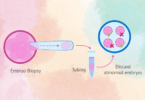There has been controversy surrounding natural therapy and ongoing strife between its supporters and opposition for a long while.
Without delving into the financial interests of both groups and focusing only on the wellbeing of patients, we’ll try to explain the benefits but also possible risks of natural therapy.
What is natural therapy?
Each one of us has at least once implemented natural therapy in some form, whether we knew it under that name or not.
Natural therapy is also known as alternative medicine/therapy and complementary medicine/therapy although the latter two terms should not be used interchangeably.
An alternative to conventional medicine, these practices aim to fill the gaps where standard treatments fail to provide a satisfying result.
In other words, natural therapy encompasses all alternative medical treatments that haven’t been scientifically proven to yield the results they claim to but are not proven to be harmful either.
The gap between alternative medicine and orthodox conventional medicine is somewhat bridged with complementary therapy.

Complementary medicine or therapy is a form of alternative medicine that is being used alongside conventional medical treatments to reduce their side effects or even boost their effectiveness.
While numerous studies are showing the positive effects of natural therapy on patients beyond the placebo effect, conventional medicine resists it.
This resistance is often attributed to the fact that modern medicine rests on the cause and effect principle where every harmful agent has a tried and approved medication or precise procedure that negates it.
But what happens when the complicated way of life we lead nowadays produces a complex condition that requires an equally complex treatment?
What happens when the harmful agent is unknown, like in cases such as autism or cancer?
It is important to note that the vast majority of people who suffered an injury or illness, went to the doctor first. Only when conventional medicine capitulates (or proves to be inaccessible) people reach out to alternative therapy, hence its name.
The most notable methods and their benefits
1. Homeopathy
This is a system of alternative medicine in which illnesses are treated by extremely small doses of natural substances that in greater amounts would generate symptoms of that illness. It operates by the same principle as a vaccine.
2. Shamballa Multi-Dimensional Healing or Shamballa Reiki
It is said that Reiki practitioners transfer “universal energy” through the palms of the practitioner to the patient. Reiki encourages emotional or physical healing through a technique called hands-on healing or palm healing.
3. Chiropractic medicine
Chiropractic medicine focuses on manual adjustment techniques of the spine but also specializes in the diagnosis and therapy of the disorders of the nervous system and musculoskeletal system.
4. Aromatherapy

Also called essential oil therapy, it is a natural therapy that uses plant extracts such as aromatic essential oils and other aromatic compounds to enhance physical and emotional health. It is often used in combination with other treatments, like massages.
5. Balneotherapy
Immersing in the mineral-rich water or mud is at the core of balneotherapy. This method is found in the traditional medicine of many peoples, most notably Romans who were famous for their spas.
6. Remedial therapy and massage
These methods are hands-on treatments that stimulate and increase blood flow, restore the function of soft tissue, decrease muscle tension, and assist in easing bodily pains and making joints more mobile.
7. Nutrition
It improves the wellbeing of a person by detecting nutritional deficiencies and providing personalized dietary plans with a focus on food with necessary nutrients. It also identifies food intolerances and is age- and gender-specific.
8. Biofeedback
According to the Mayo clinic, biofeedback helps a patient receive information and control certain bodily functions with the help of electrical sensors connected to the body. It is used to reduce pain or improve physical performance.
9. Traditional Chinese medicine, Acupuncture, and Acupressure
Those who moved closer to China with the help of companies such as fourwinds-ksa.com, have likely already experienced the benefits of this alternative medicine in its purest form.
At the core of TCM is the restoration of qi (pronounced chi), life energy flowing through meridians, invisible channels within a body. According to TCM, illness is cured if the blocks in these channels are removed, either by
- acupuncture (inserting hair-thin sterile needles at precise points on the meridians),
- acupressure (pressing the points on meridians with hands, elbows, or feet), cupping (creating suction by placing heated cups on the skin) or
- herbal medicine, breathing techniques, and exercise.
- Yoga. Originally an ancient Hindu philosophical tradition, modern-day yoga is better known as a set of posture-based exercises with meditation and spiritualism at their core.
Side effects of natural therapy
Side effects can lead to skin infections or physical injuries due to insufficiently sterilized instruments and non-standardized procedures.
Allergic reactions and incompatibility with prescription medications are common due to a lack of procedural testing, as well as the absence of a regulative body.
Such a body is necessary to define and regulate the right amount of active substance in a supplement for the treatment of a specific condition.
Additionally, undesired complications can happen due to interactions between prescribed medications and herbal supplements.
This happens when patients experimenting with alternative medications do not mention taking alternative therapy to their physician.
Either in fear of reproach from an opposing side or being unaware of potential interactions, patients hide the fact and risk harmful side effects or ineffectiveness of the therapy.
Conclusion
To sum up, natural therapy doesn’t have a scientific background and cannot give scientific assurance of its effectiveness.
Without an ethical board guiding the providers of these services, each patient has to accept personal responsibility for the effects of the therapy.
Natural therapists should, ideally, work together with physicians to create the most comprehensive and tailored treatment for their patients.
Through cooperation, they would be able to alleviate or eliminate the side effects of medications. Together, they would be able to provide thorough and all-inclusive healing.
This way they would not only treat physical illness but introduce healthy habits and stress-relieving practices into the patients’ daily lives.
Such a precautionary approach would lower the risk of numerous modern-day illnesses and, even if the disease develops, would greatly ease and hasten its treatment.






